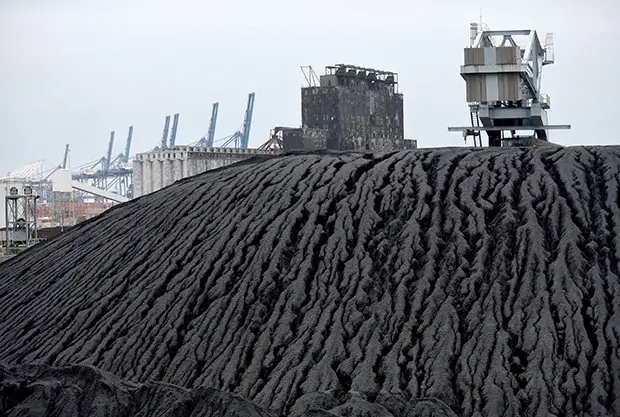The closure of the Port of Baltimore following the collapse of the Francis Scott Key Bridge temporarily halted all shipping traffic, including about 28% of U.S. coal exports, the U.S. Energy Information Administration reported March 28.
The closure, however, is unlikely to have a significant impact impact on physical coal prices as Northern Appalachian coal end users, such as brick kilns in India, experience oversupply, some thermal coal market participants told S&P Global Commodity Insights.
At the same time, other market participants said prices could see some near-term support as buyers seek to replace NAPP flows. A majority of those surveyed by S&P Global after the bridge collapse pointed to weak demand as a headwind amid rising prices.
Coal prices FOB Baltimore have moved less than 1% since the bridge collapse on March 26, Platts estimates showed.
Coal for Power Generation
Thermal coal, which is used primarily for power generation and industrial heating, is the dominant type of coal exported from the Port of Baltimore.
“These shipments to averaged about 12 million tons between 2019 and 2022, then rose to 19 million tons in 2023,” the EIA said. “Exports of metallurgical coal from Baltimore, or coal used as a feedstock in steel production, are also important: 6 to 10 million tons between 2019 and 2023.”
The largest recipient of U.S. energy, according to the EIA of coal supplied from Baltimore, the largest lead over the past five years has been India, whose brick-making industry has been the main buyer. Other major recipients of thermal coal from Baltimore include several European countries that can be reached through ports in the Netherlands. Smaller markets include customers in the Dominican Republic, Canada and Egypt.
“An attractive feature of the Port of Baltimore is its proximity to the northern Appalachian coalfields of western Pennsylvania and northern West Virginia,” the EIA said. “Mines in this region produce both superior quality metallurgical coal and thermal coal with high thermal content.”
Port of Baltimore Coal Exports
The Port of Baltimore is the second largest coal export center from United States, second only to Hampton Roads in Virginia.
“In three of the last five years, annual coal exports from the Port of Baltimore have been approximately 20 million tons, with the only exception occurring in 2020 as a response to the COVID pandemic -19 reduced global coal demand,” the EIA said.
Exports from Baltimore rose to 28 million tons in 2023, primarily due to rising demand for U.S. coal, according to the EIA. in Asia.
“Even before the port closure, we expected much slower growth in total U.S. coal exports in 2024, up just 1%,” the EIA said. "Baltimore's shutdown could impact export volumes this year."





